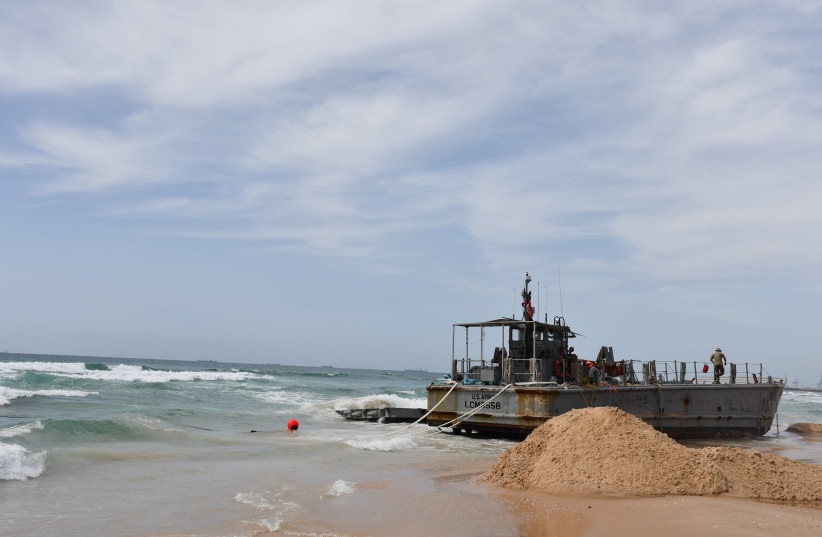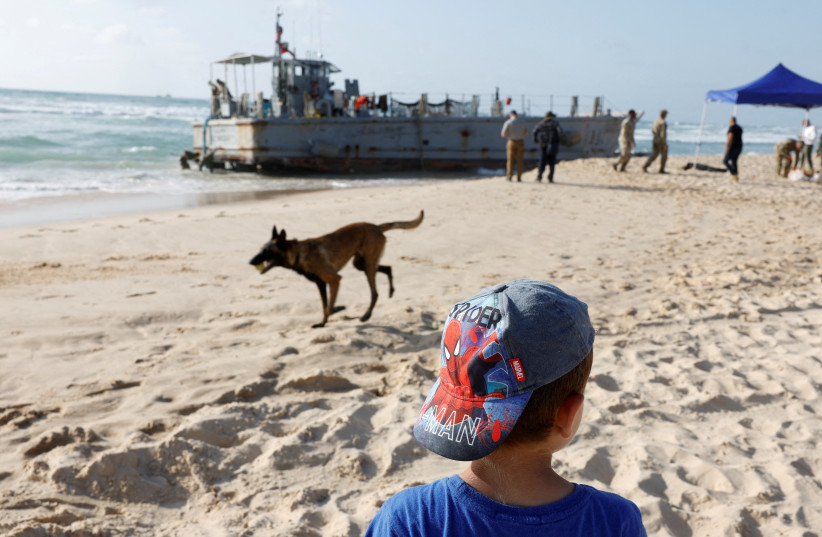A US landing craft that became beached on the Ashdod shore was freed from the sand, a US military official told The Jerusalem Post on Sunday.
The LCM 8558 landing craft has been working with a US-built floating pier off the coast. It was beached on Saturday after seeking to help free a US army tug that was helping move the floating pier from an area off the Gaza coast to near Ashdod due to adverse weather conditions.
The army tug resembles a flat section of the floating pier, so it was initially mistaken for a part of the floating pier.
The tug is several dozen feet long, has a small wheelhouse on it, and is gray like the rest of the pier. The US was moving the floating pier toward an area near Ashdod because of the high swells that emerged on Thursday and Friday. The swells were around 1.5 meters, and winds gusted to some 20 knots.
These higher seas and waves apparently necessitated moving the pier. It is also not the first time the pier has been affected by weather conditions. When it was first constructed near Ashdod, it had to wait to be deployed because of turbulent waters.

The US floating pier has been helping deliver humanitarian aid to Gaza. It was constructed after a decision in early March to deploy this unique US Army capability. The Joint Logistics Over-the-Shore capability was deployed beginning in mid-March with several vessels sailing from Fort Eustis across the Atlantic via Crete to the coast of Gaza. It began operations in mid-May.
Vessel rescue attempt
On Thursday evening, several vessels involved with moving the pier broke free from their moorings. The tug was beached on Ashdod Beach, a hundred meters north of a lifeguard stand near an area called Beersheba Beach. On Thursday, the LCM 8558 came to try to help the tug. It is apparently not intended for this type of salvage operation, however, and became stranded on the beach near the tug with low tide. It had to be dug out with a front-loader.

The tide remained an issue because the low tide was around six in the afternoon. Around nine in the evening, a US military official said the LCM was pulled off the beach, with the hope that it would remain free of the sand. The goal will then be to take the tug off the beach. Then, the vessels will all be united with the floating pier and likely return to the coast of Gaza so humanitarian aid can be delivered again.
The Israel Navy assisted in the efforts to free the ships. Israelis from Ashdod initially became fascinated by the new attraction on the beach. After a day, the stranded vessels became of less interest, and people returned to sunning themselves.
